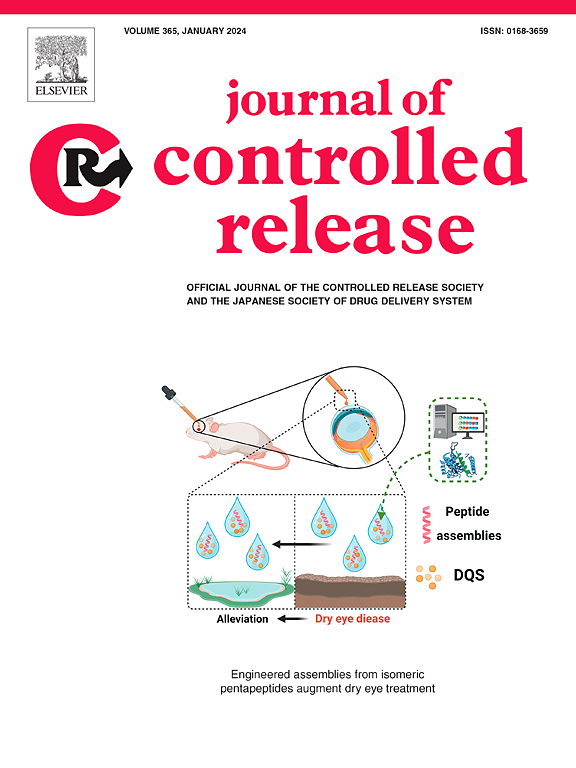Engineered bacterial extracellular vesicles for gastrointestinal diseases
IF 10.5
1区 医学
Q1 CHEMISTRY, MULTIDISCIPLINARY
引用次数: 0
Abstract
The gut microbiota, a complex microbial ecosystem within the gastrointestinal (GI) tract, plays a pivotal role in maintaining GI homeostasis. Dysbiosis of this community is increasingly implicated in the pathogenesis of diverse GI disorders. Bacterial extracellular vesicles (bEVs) secreted from gut microbes have emerged as an innovative therapeutic nanoplatform for GI diseases. Their unique advantages, including intrinsic biocompatibility, low immunogenicity, high drug-loading capacity, ease of customization and scalability make them a promising candidate for next-generation nanotherapies. In this review, we first discuss the biogenesis pathways, composition and internalization mechanisms of bEVs, with a particular focused on the bioactivities and mechanisms of natural bEVs in modulating gut health. Additionally, we highlight different bEVs engineering approaches to enhance bEVs functionality, stability, and disease-specific targeting, offering insights applicable to GI therapy and beyond. Despite the great potential of bEVs in various biomedical applications, challenges remain in developing standardized, scalable and reproducible bEVs production methods to facilitate clinical translation. Addressing these barriers is critical to unlocking the full therapeutic potential of bEVs in the GI disorders and other biomedical applications.


用于胃肠道疾病的工程细菌细胞外囊泡
肠道菌群是胃肠道内一个复杂的微生物生态系统,在维持胃肠道稳态中起着关键作用。这个群落的生态失调越来越多地与各种胃肠道疾病的发病机制有关。由肠道微生物分泌的细菌细胞外囊泡(bEVs)已成为一种创新的胃肠道疾病治疗纳米平台。它们独特的优势,包括内在的生物相容性、低免疫原性、高载药能力、易于定制和可扩展性,使它们成为下一代纳米疗法的有希望的候选者。在这篇综述中,我们首先讨论了bev的生物发生途径、组成和内化机制,重点讨论了天然bev调节肠道健康的生物活性和机制。此外,我们重点介绍了不同的bev工程方法,以增强bev的功能、稳定性和疾病特异性靶向,为胃肠道治疗及其他领域提供见解。尽管bev在各种生物医学应用中具有巨大潜力,但在开发标准化、可扩展和可重复的bev生产方法以促进临床转化方面仍然存在挑战。解决这些障碍对于释放bev在胃肠道疾病和其他生物医学应用中的全部治疗潜力至关重要。
本文章由计算机程序翻译,如有差异,请以英文原文为准。
求助全文
约1分钟内获得全文
求助全文
来源期刊

Journal of Controlled Release
医学-化学综合
CiteScore
18.50
自引率
5.60%
发文量
700
审稿时长
39 days
期刊介绍:
The Journal of Controlled Release (JCR) proudly serves as the Official Journal of the Controlled Release Society and the Japan Society of Drug Delivery System.
Dedicated to the broad field of delivery science and technology, JCR publishes high-quality research articles covering drug delivery systems and all facets of formulations. This includes the physicochemical and biological properties of drugs, design and characterization of dosage forms, release mechanisms, in vivo testing, and formulation research and development across pharmaceutical, diagnostic, agricultural, environmental, cosmetic, and food industries.
Priority is given to manuscripts that contribute to the fundamental understanding of principles or demonstrate the advantages of novel technologies in terms of safety and efficacy over current clinical standards. JCR strives to be a leading platform for advancements in delivery science and technology.
 求助内容:
求助内容: 应助结果提醒方式:
应助结果提醒方式:


